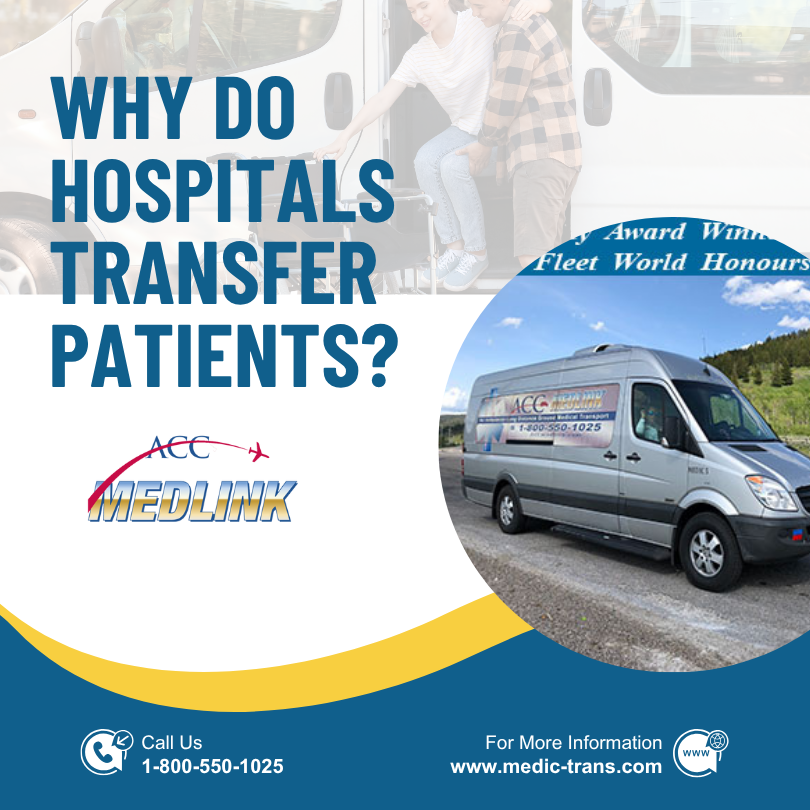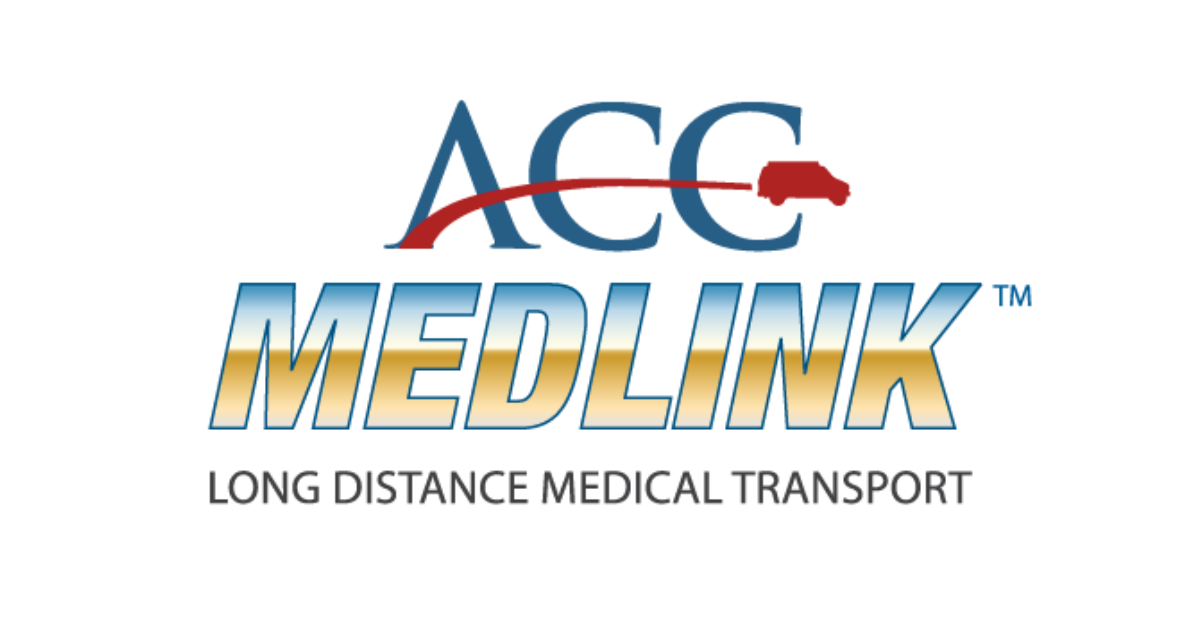Why Do Hospitals Transfer Patients?
Why Hospitals Move Patients to Different Facilities
Hospitals sometimes need to move patients to other locations for better treatment options. Transfers happen when a patient requires specialized care or equipment not available nearby. This process helps patients receive the right care at the right time. Medical teams work quickly to arrange safe moves that protect the patient’s health. One common way to handle long-distance moves is through interstate medical transport. This service supports hospitals by safely transferring patients across state lines. Understanding why hospitals transfer patients helps families feel more confident in the decisions made for their care.

Reasons Hospitals Transfer Patients
Need for Specialized Medical Care
Hospitals transfer patients when their condition requires treatment from specialists. Not all hospitals have doctors trained in every medical field. For example, some hospitals lack cardiologists, neurologists, or trauma surgeons. When a patient needs expert care for a specific illness or injury, transferring to a specialized center is necessary.
This move gives patients access to better diagnosis and treatment options. Specialized care can improve chances of recovery. Hospitals coordinate quickly to move patients safely to places where they receive focused medical attention for their condition.
Access to Advanced Medical Equipment
Sometimes hospitals transfer patients because they lack certain equipment. Advanced machines like MRI scanners, ventilators, or heart monitors may not be available everywhere. Some treatments require high-tech tools found only in large or specialized centers. Moving patients allows them to get care that smaller hospitals cannot provide.
This transfer helps doctors perform accurate tests or surgeries. Using the right equipment can save lives and improve results. Hospitals work together to arrange these transfers swiftly and safely to meet the patient’s medical needs.
Types of Patient Transfers
Emergency Transfers
Emergency transfers happen when a patient needs urgent care that the current hospital cannot provide. These moves happen quickly to save lives or prevent serious harm. Ambulances or air medical services often carry patients during emergencies.
For example, a person with severe trauma might be sent to a trauma center with specialized teams and equipment. Hospitals work fast to prepare patients for transfer while keeping them stable. Emergency transfers focus on speed and safety. Medical staff team up with transport crews so patients get care without delay.
Non-Emergency Transfers
Non-emergency transfers involve moving patients who are stable but need treatment not available at the current hospital. These transfers are planned ahead and arranged carefully. For example, a patient might be sent to a rehabilitation center or a hospital with advanced testing tools.
The transfer can happen by ambulance or other medical transport based on the patient’s needs. Non-emergency moves let patients continue recovery or get specialized care in the right place. Hospitals communicate clearly to match the transfer with the patient’s condition and schedule.
How Transfers Impact Patient Outcomes
Benefits of Receiving Specialized Care
Getting care from specialists can greatly improve a patient’s health. Hospitals that focus on certain conditions have the right tools and skilled staff. Patients moved to these places often get treatments that regular hospitals cannot provide. This includes surgeries, therapies, and tests tailored to the illness.
Receiving care from specialists can lead to faster recovery and better long-term results. It also helps catch complications early. Transfers connect patients to teams with deeper knowledge of specific conditions. This focused care can make a real difference in how well patients do after treatment.
Risks and Safety Measures During Transfer
Patient transfers come with risks like delays, changes in condition, or accidents during transport. Hospitals take many steps to reduce these risks. Medical teams assess patients before the move to confirm they are stable enough. During transfer, trained staff monitor vital signs and provide needed treatment.
Vehicles are equipped with medical gear to handle emergencies. Communication between sending and receiving hospitals is constant. This keeps everyone informed and ready. While risks exist, careful planning and proper equipment help keep patients safe throughout the transfer process.
Role of Medical Transport Services
Ground Ambulance Transfers
Ground ambulances are the most common way to transfer patients between hospitals. They provide safe, steady transport over short or medium distances. Ambulances come with trained medical staff who watch patients closely during travel. They carry essential medical equipment to handle emergencies on the road.
This option works well for patients who are stable but still need medical help while moving. Hospitals schedule transfers with ambulance teams to make sure patients leave and arrive on time. Ground transport balances cost, safety, and speed for many types of patient moves.
Air Medical Transport Options
Air medical transport moves patients fast over long distances or areas hard to reach by road. Helicopters and fixed-wing planes are equipped like flying intensive care units. Medical crews watch patients carefully and provide treatments during the flight. This transfer type is often used in emergencies or when time matters most.
Air transport helps patients reach hospitals with specialized care faster than ground travel. Weather and available landing spots affect when air transport can be used. Hospitals plan these transfers with air services to deliver quick and safe patient care.
Legal and Ethical Considerations in Patient Transfers
Patient Consent and Rights
Patients have the right to understand and agree to their transfer. Hospitals must explain why the move is necessary and what it involves. Consent is required before transferring a patient unless there is an emergency where the patient cannot decide. Patients also have the right to privacy and respectful treatment during transfers.
Hospitals should communicate clearly with patients and their families about the process. Respecting these rights helps build trust. It also protects patients from feeling confused or ignored when medical decisions are made on their behalf.
Hospital Responsibility and Regulations
Hospitals must follow laws and rules when transferring patients. These regulations protect patient safety and rights. Hospitals need to document the transfer and share medical information with the receiving facility. Staff must follow protocols to avoid mistakes.
Responsibility includes checking that the transport service can handle the patient’s needs. Hospitals are accountable if a transfer causes harm due to negligence. Compliance with regulations helps hospitals maintain quality care and avoid legal issues. Clear communication and proper planning support a safe and lawful transfer process.
How ACC Medlink Supports Safe and Efficient Patient Transfers
Patient transfers demand precise planning and fast coordination to keep patients safe. ACC Medlink offers dependable medical transport that hospitals rely on to move patients smoothly. Their team works directly with medical staff to match patient needs and follow strict safety rules.
Transfers give patients access to doctors and treatments not available locally. Trusted transport reduces worry for patients and families during tough times. When you need help with a patient transfer, contact us. We provide clear communication and reliable support to make each move as safe and comfortable as possible.
